This post may contain affiliate links. Please read our disclosure policy.
If you’re up for a flavor-packed journey through Saudi Arabian cuisine, you’ve got to try my Easy Beef Kabsa recipe. This timeless dish is like a ticket to the heart of the Middle East.
Imagine perfectly fluffy rice soaking up all those amazing flavors from the spices, onions, tomatoes, carrots, and beef broth, topped with tender chunks of beef and adorned with toasted almonds, creating a dish that’s unlike anything else. It’s the perfect choice to surprise your family or guests at a special get-together.
In this recipe, every grain of rice holds a story, and every spice tells a tale of tradition. Give it a try, and let me know how much you enjoyed it!
Love in a Plate of Kabsa
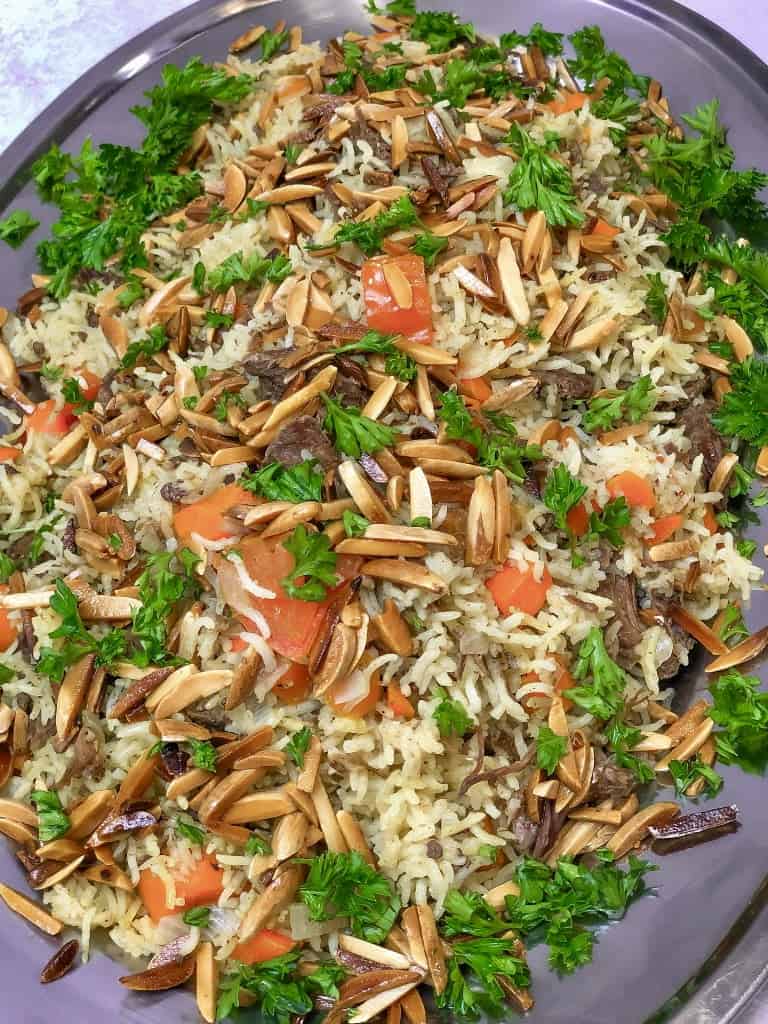
Table of Contents
Kabsa: the poetry of spices, the rhythm of rice, and the melody of Middle Eastern hospitality.
Origin and Tradition
The word “kabsa” is an Arabic word that literally means pressed or packed together. The name actually comes from the way the dish is prepared, where all ingredients are stacked together in one pot.
Kabsa is a fragrant dish made of two main ingredients: meat and rice. But the meat can be lamb, beef, chicken, or, even less commonly, fish.
As for rice, use some cups of basmati rice for this meal. The dish is very popular and desirable in the Middle East in general and the Gulf countries in particular. It is a traditional dish in the UAE, Kuwait, Oman, Bahrain, and, most importantly, Saudi Arabia, where the dish originated.
A Full Meal Powered by Beef Shanks
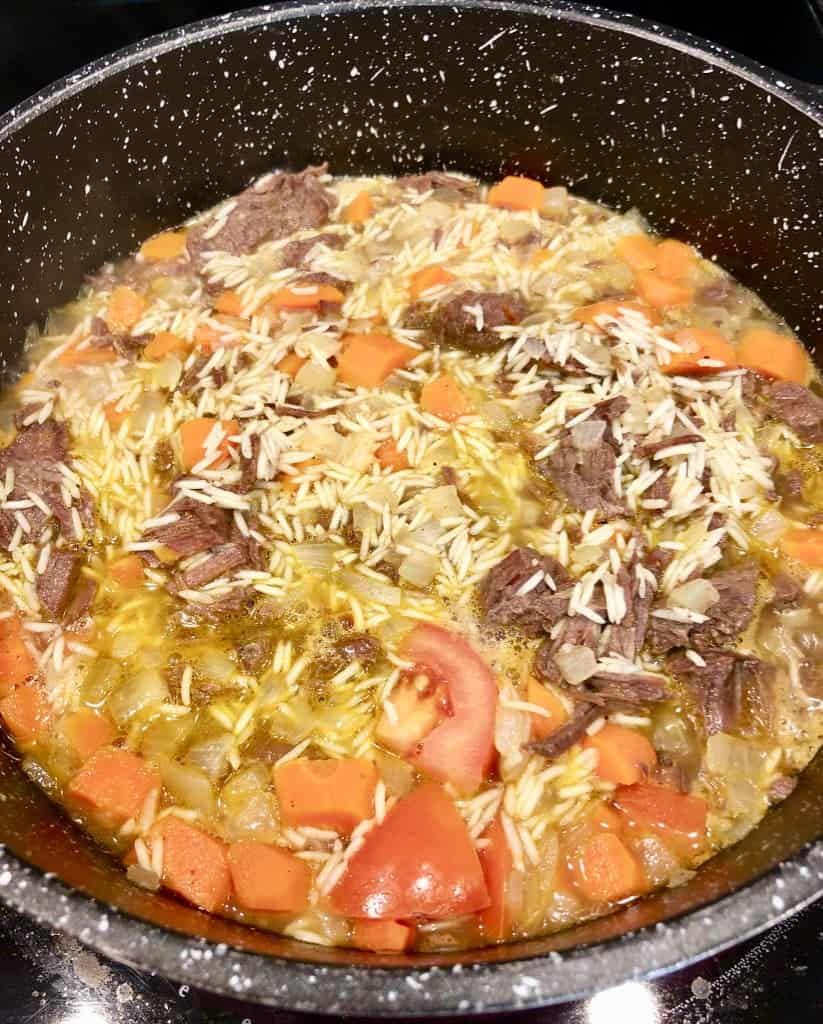
Chicken Kabsa
Did you know that you can prepare chicken kabsa instead of kabsa with beef shanks? It’s quite easy and appetizing for those chicken fans in your family.
To make chicken kabsa, you can follow the same exact steps in the recipe card. You just leave out the beef or lamb shanks. Instead, you can choose either one of two options.
One way is by using whole chicken thighs, drumsticks, or breasts, either boned or deboned. You first grill the chicken cuts over a large pan or grill. Then, go through the other steps. At last, put the grilled chicken pieces on top of the rice.
The other way is by cooking the chicken pieces. Place them, covered with water, in a large pot. Boil them on medium-high heat for 10–15 minutes and then on medium-low heat for 30 minutes. Then, you follow the same steps; you only replace the cooked beef shanks or lamb pieces with the chicken ones.
Spice It Up!
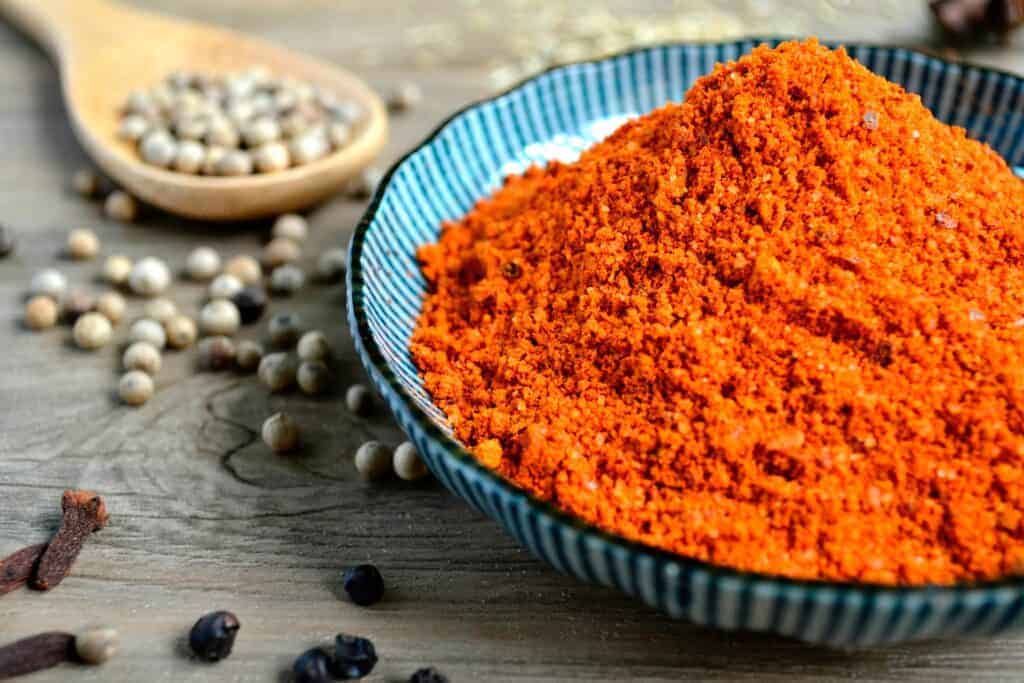
Tips and Hints for the Perfect Beef Kabsa
To have fluffy kabsa rice, first wash the rice, soak it in water for 30 minutes, and then drain. Also, be careful about the amount of water you add.
If you find your rice slightly undercooked, here’s a handy tip: introduce a small amount of water and let it steam on medium heat. This simple trick works like magic.
It’s common to eat beef or lamb kabsa with side dips. In general, Saudis have the dish with a sauce called shatta, or chili pepper sauce. Mix green pepper, garlic, tomato, cilantro, black pepper, and enough salt in a small bowl to get the sauce.
One variation of the kabsa with beef shanks recipe goes without broth. You can replace the meat broth with tomato sauce. It’s a mixture of tomato paste, tomato sauce, and water.
Pro Tip
Give the meat a fragrant touch before you cook it. Add some cardamom pods, black lime bay leaves, and a cinnamon stick to the meat broth.
Frequently Asked Questions
The best kind is lean beef with a little fat. It cooks tenderly and can be cut into chunks easily.
One of the primary differences is in the cooking method. Yemeni Chicken Mandi follows a traditional approach, prepared in a vessel partially buried in the ground, resembling an earthen oven. On the other hand, Saudi Chicken Kabsa is cooked on the stove.
These Middle Eastern chicken and rice recipes are very similar, including their preparation. The only significant difference is that Biryani has a bolder, somewhat spicier flavor.
Pro Tip
It’s a rule of thumb that says when you use one cup of basmati rice, you add one and a half cups of liquid. Make sure not to stir the rice while it is cooking.
Storage
Refrigeration: Store the beef Kabsa in airtight containers or sealable plastic bags. Place it in the refrigerator within two hours of cooking to minimize bacterial growth.
Freezing: If you want to store beef Kabsa for a longer period of time, you can freeze it. Place the Kabsa in airtight containers or heavy-duty freezer bags, removing as much air as possible to prevent freezer burn. It’s advisable to consume frozen beef Kabsa within 2–3 months for the best quality.
Reheating: Reheat beef Kabsa on the stovetop or in the microwave until it reaches a safe internal temperature.
Serving Suggestions
Traditionally, beef Kabsa is served alongside Middle Eastern salads such as fatoush, tabouleh, or any Arabic salad, enhancing the dining experience with a variety of fresh and vibrant flavors.
To complement the richness of the dish, consider serving it with plain yogurt or a yogurt garlic sauce, providing a cool and tangy contrast that balances the robust and savory notes of the beef Kabsa. This combination not only adds depth to the meal but also offers a well-rounded and satisfying dining experience.
Beef Kabsa: The Queen of Middle Eastern Dishes

Variations and Substitutions
- Meat Substitutions: Instead of beef, you can use lamb, chicken, or a combination of meats to suit your preferences.
- Rice Variations: While traditional kabsa uses long-grain basmati rice, you can experiment with other rice varieties like jasmine rice or even brown rice for a nuttier flavor and added nutrition.
- Saffron Infused Beef Kabseh: Add a touch of luxury by infusing saffron into the dish, providing a distinct and aromatic flavor.
Ingredients of Kabsa with Beef Shanks
Beef: Use shanks of beef that are mostly lean. You can replace beef with lamb, and the best part for kabsa is lamb thighs.
Olive oil: Extra virgin olive oil is used to sauté the veggies.
Veggies: Kabsa becomes delectable with a combination of vegetables such as onions, carrots, and tomatoes, all cubed into large chunks.
Ginger and garlic: You can also use the paste or freshly grated or minced ginger and garlic.
Kabsa spice: This is one of these whole spices. But you can prepare it yourself if it isn’t available. Use equal amounts of these ground spices: turmeric, fennel, cilantro powder, ground ginger, black pepper, black cardamom, and cumin.
Basmati rice: Always opt for long-grain basmati rice.
Meat broth: You can use the broth of the cooked beef.
Salt: Salt is the balancing factor that brings out all tastes and flavors.
For the Topping
Almonds: Choose slivered almonds. You can also use raw cashews or pine nuts.
Olive oil: It makes the nuts crunchy. To do so, heat this vegetable oil and add the nuts.
(Scroll down for recipe details.)
Beef Recipes You May Want to Try
- Mansaf (Lebanese Rice with Meat)
- Ultimate Beef Shawarma Sandwich
- Quick Spicy Beef (Sujuk) Pizza
- Green Bean Stew with Minced Beef (Loubia Bi Lahme)
- Loaded Beef Shawarma Fries
- Beef Shank Layered Fatteh
- Freekeh with Beef Shanks
- Meat Pies – Lahme Bi Ajeen
- Simple Lebanese Meat and Rice-Hashweh
- Beef Shawarma Egg Rolls – Air Fried
Easy Beef Kabsa
Ingredients
- 2 pounds Beef shanks, or lamb
- ¼ cup olive oil, extra virgin
- 2 medium onions
- 4 carrots, cubed
- 1 large tomato, largely cubed
- 1 tablespoon ginger and garlic, paste or freshly grated/minced
- 3 tablespoons kabsa spice
- 2 cups Basmati rice
- 1 dry lemon, optional
- 3 ½ cups meat broth
- 2 tablespoons salt
Toppings
- 1 cup slivered almonds , and/or raw cashews
- 3 tablespoons olive oil
Instructions
- Place the beef shanks and dry lemon (loomi) in a pressure cooker for 1 hour.
- Remove the meat and gently piece each chunk using your hands into the size you desire.
- Sift the meat broth to clean from any gunk.
- Wash and drain your rice until the water runs clear.
- In a medium pot, add 1/4 cup oil on high heat and then sauté the cubed onions and carrots for 5-7 minutes.
- Add the ginger and garlic paste and stir for another 2 minutes, or you can use fresh garlic and ginger.
- Add in the soaked and drained rice, cooked meat chunks, kabsa spice, salt, meat broth and cubed tomatoes, and then stir.
- Let it boil for 1 minute, and then cover the pot and lower to simmer for 15 -17 minutes.
- Allow rice to rest for 10 minutes before serving.
- Toast the slivered almonds with olive oil until they are golden brown to garnish the rice along with minced parsley.
Video
Notes
- To have fluffy kabsa rice, first wash the rice, soak it in water for 30 minutes, and then drain. Also, be careful about the amount of water to add. It’s a rule of thumb that says when you use one cup Basmati rice, you add one a half cups liquid. Make sure not to stir the rice while cooking.
- It’s common to eat beef or lamb kabsa with side dips. In general, Saudis have the dish with a sauce called Shatta or chili pepper sauce.
- One variation of the kabsa with beef shanks recipe goes without broth. You can replace the meat broth with tomato sauce.
- Give the meat a fragrant touch before you cook it. Add some cardamom pods, bay leaves, and cinnamon stick to the meat broth.

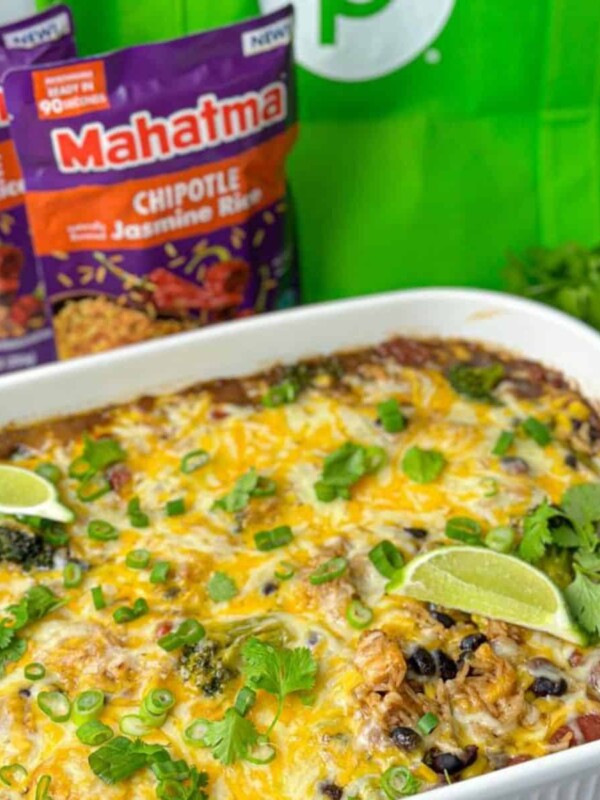
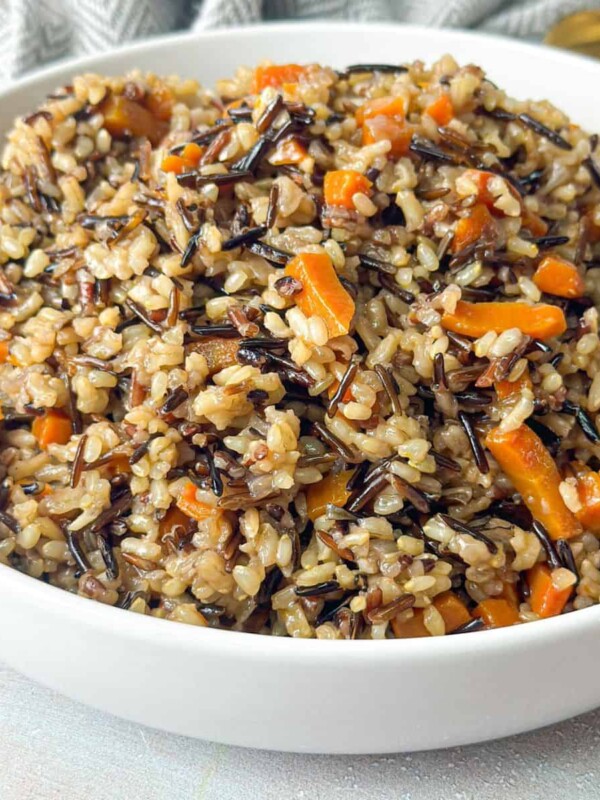
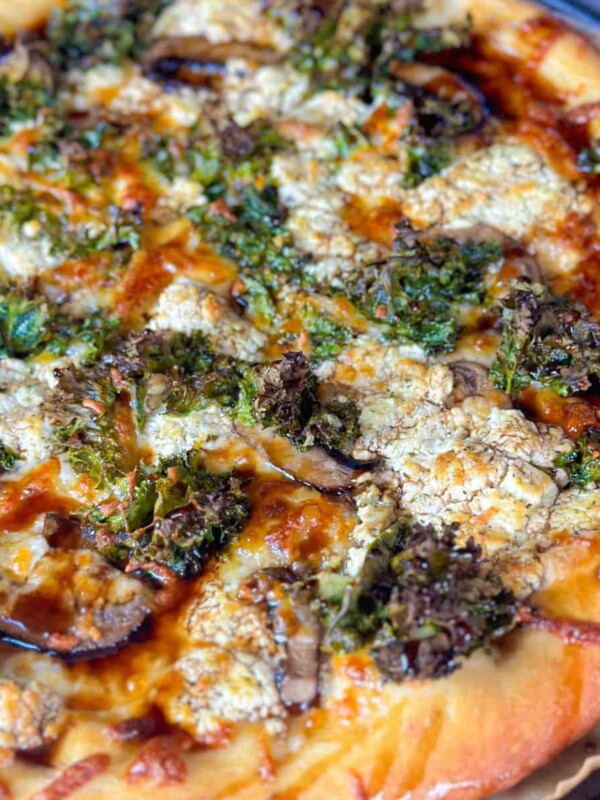
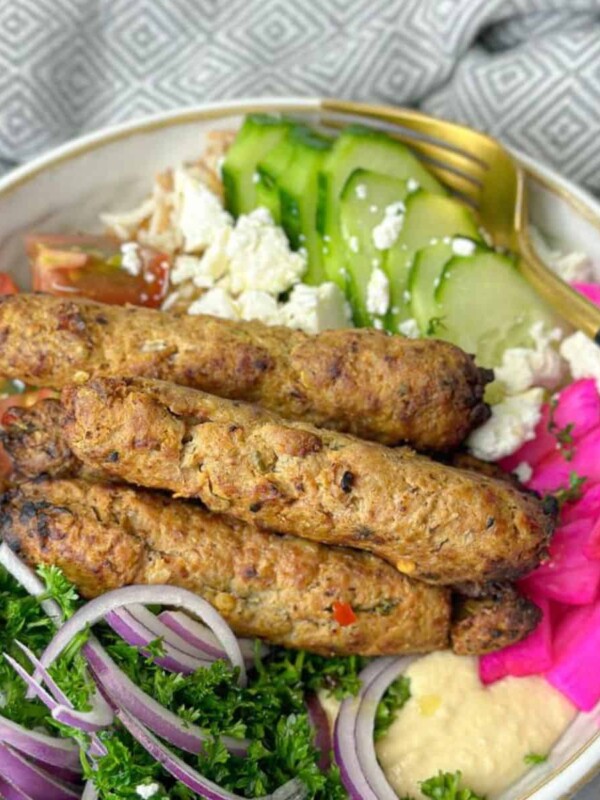
Yummmy. This looks so scrumptious! Off to our local butcher to get some meat 😅
Absolutely delicious! One of the best rice dishes I’ve ever cooked.